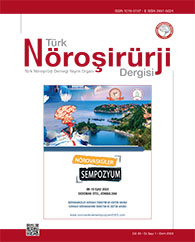2Department of Radiology, Mayo Clinic, Rochester, MN, USA
Özet
Background: Dual antiplatelet therapy (DAPT) is frequently used in treating cerebral aneurysms with flow diverters (FDs), whereas single antiplatelet therapy (SAPT) is used mostly with coated FDs and in ruptured aneurysms.Methods: Outcomes of interest included ischemic and hemorrhagic complications, conversion to DAPTs, and in-stent stenosis rates under long-term SAPT. Subgroup analysis was performed for ruptured vs. non-ruptured aneurysms and coated vs. non-coated FDs. All data were analyzed using R software version 4.2.2.
Results: Twelve studies with 240 total patients (43 patients in the ASA group and 197 patients in the non-ASA group) were included in our meta-analysis. The pooled ischemic occlusion rate was 9.8% (95% CI = 4.87-18.95: p-value = 0.09) for SAPTs. The ASA group had significantly higher ischemic complication rates than the non-ASA group (20.8% vs. 6.3%, respectively, p-value = 0.02). The ischemic complication rates were comparable between coated vs non-coated FDs (10.7% vs. 5.5% p-value = 0.39). In stent stenosis rate were 1.9% (95% CI = 0.72-4.96) in coated FDs over 4.4% (95% CI = 1.11-16.11) (p-value = 0.32) The ruptured and non-ruptured groups also showed comparable results in terms of ischemic (17.6% vs. 7.1% respectively, p-value = 0.24) and hemorrhagic complications (9.8% vs. 1.1%, respectively, p-value = 0.08).
Conclusions: Flow diverter treatment under ASA monotherapy resulted in relatively high ischemic complication rates. Given the small sample size and the likely presence of known and unknown biases regarding the choice of antiplatelet therapy between groups, larger cohort studies are needed to evaluate SAPT treatment outcomes.

